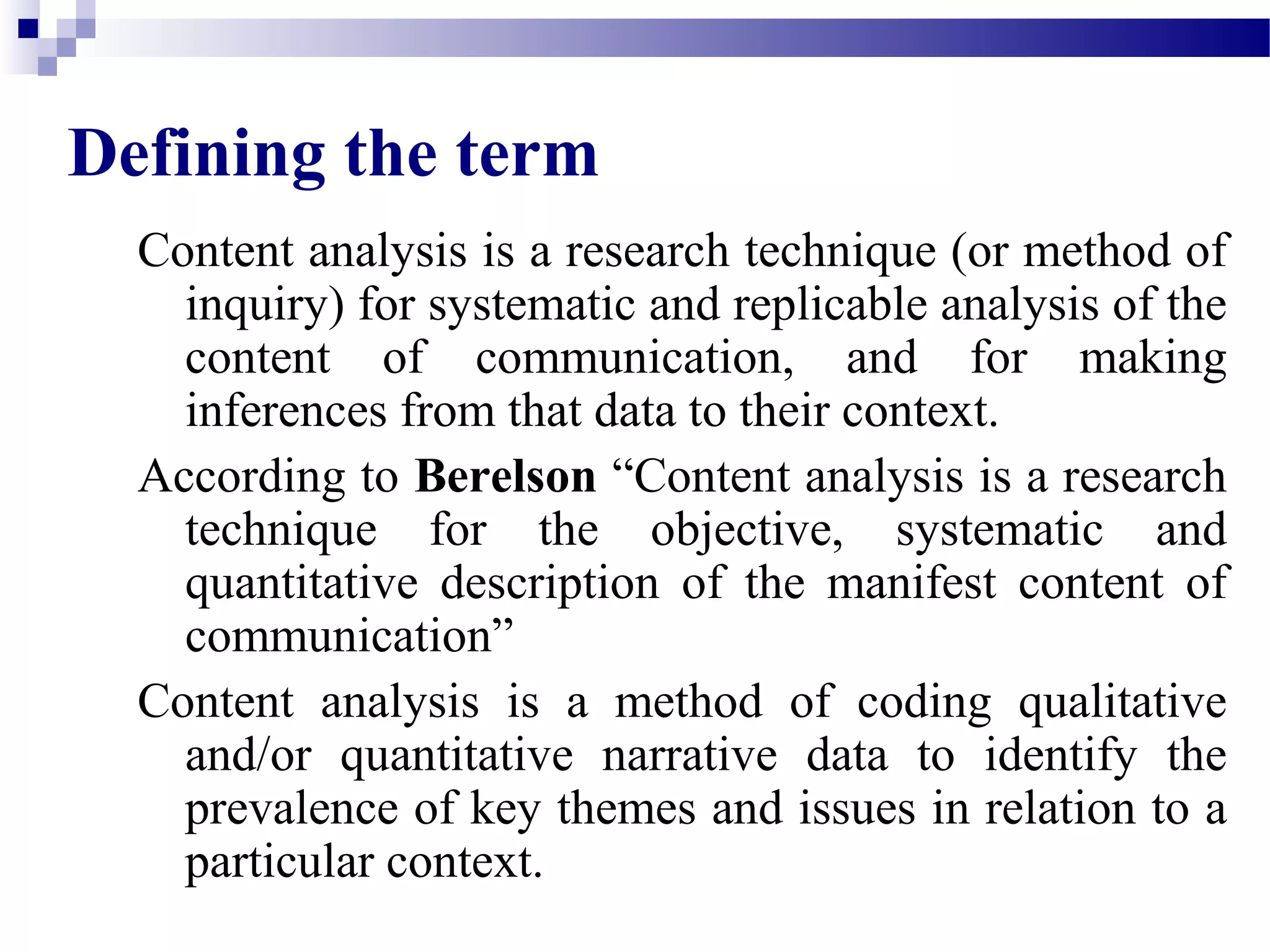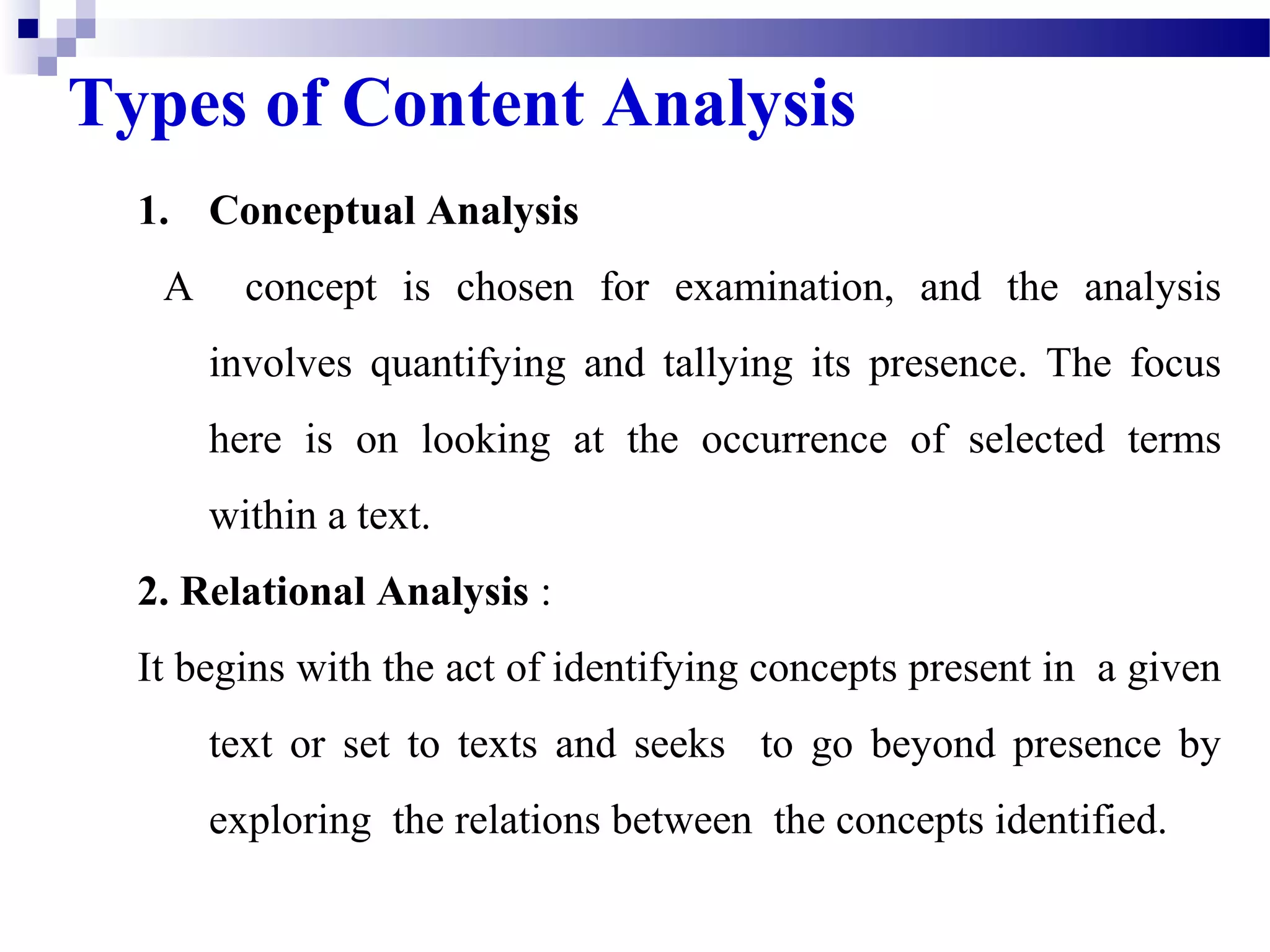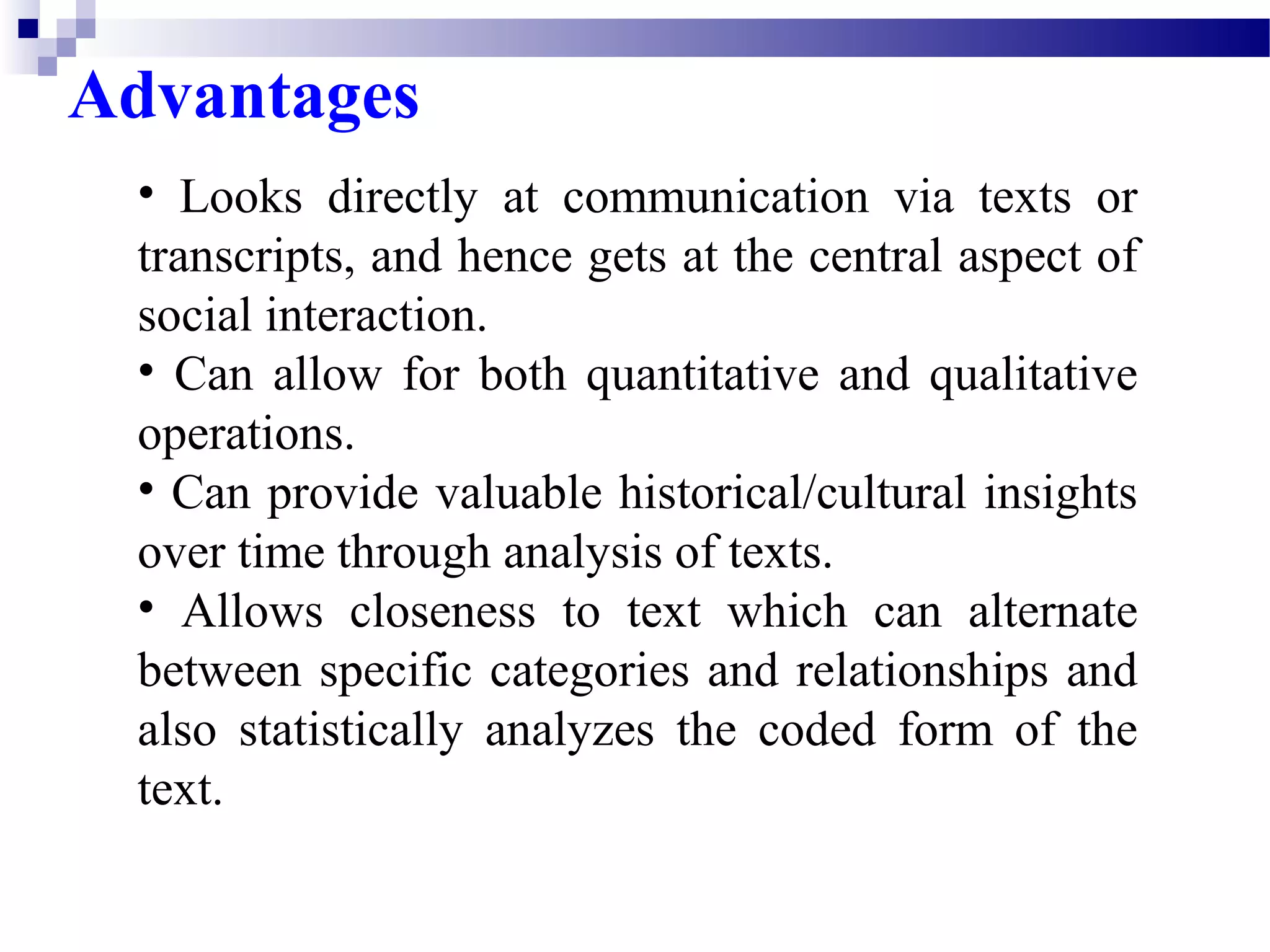Dr. N.K. Swain's research describes content analysis as a systematic method for analyzing communication through coding qualitative and quantitative data to identify key themes. It includes types such as conceptual and relational analysis and highlights its applicability across various disciplines while also addressing its advantages and limitations. The document emphasizes the importance of a robust coding scheme and proper unit of analysis in conducting effective content analysis.




















